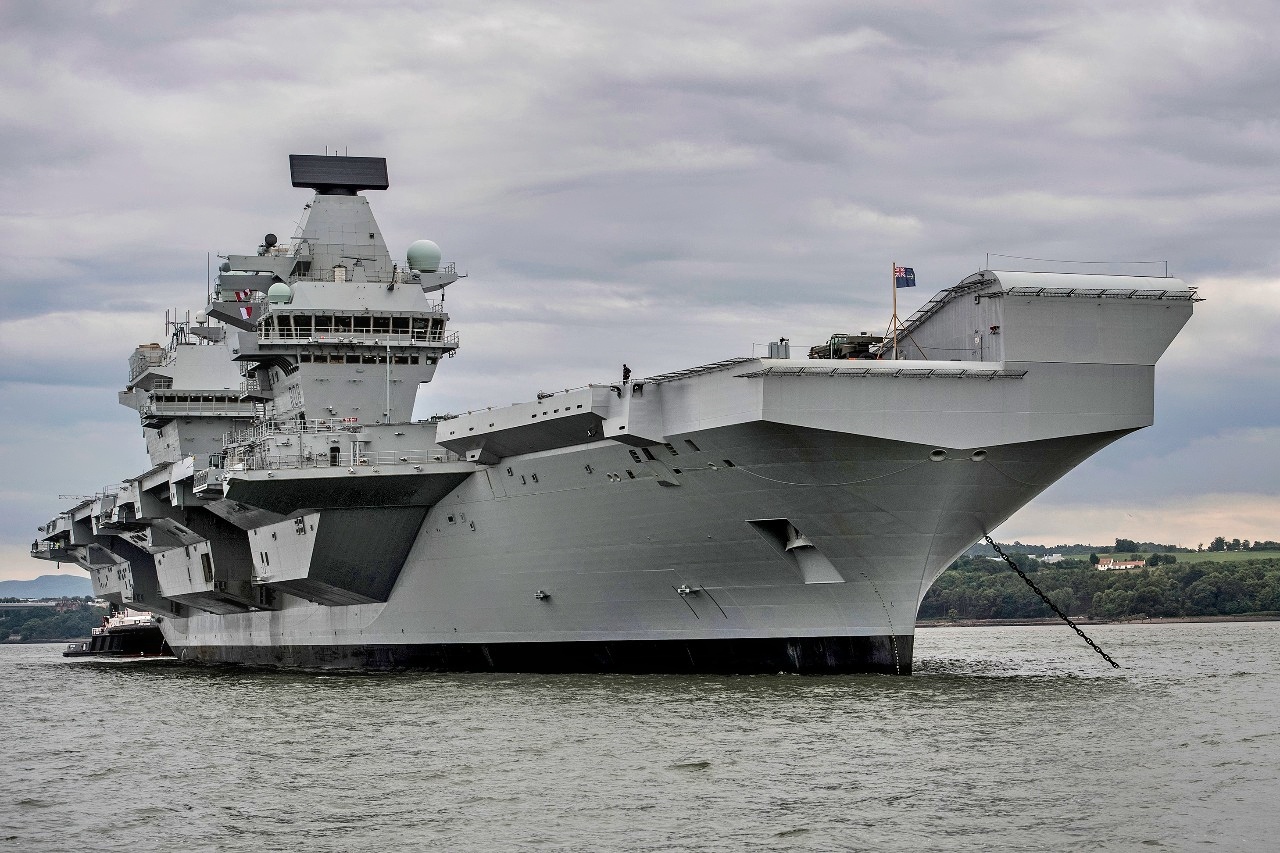The British Royal Navy’s Queen Elizabeth aircraft carrier has endured a difficult and undistinguished service life. While mechanically, it has performed better lately, it has had issues that have made the Navy cringe in embarrassment.
The British should feel relieved that they have passed through a difficult period with the Queen Elizabeth. Let’s take a closer look to see if the carrier can turn things around permanently and whether the engineers and technicians have the expertise, knowledge, and confidence to transform the carrier into greatness.
Queen Elizabeth Aircraft Carrier – Not Ready for Prime Time?
The Queen Elizabeth’s most striking problem happened in 2024. The lead ship in its class stumbled out of the gate. The vessel was supposed to be the shining example of NATO’s Exercise Steadfast Defender. This would have been a great opportunity to show allies that the carrier could project power in the European theater and send Russia a message that it was a force to be reckoned with. In February of 2024, Queen Elizabeth was supposed to depart.
On February 3, there was bad news. The Royal Navy posted on X (formerly Twitter) that “’routine pre-sailing checks’ undertaken on February 2 had identified ‘an issue with a coupling’ on [HMS Queen Elizabeth] starboard propellor shaft.”
The post continued to say that the ships would not sail and participate in the NATO drills, the largest gathering of allied military assets since the Cold War. This disappointed a crowd gathered to see the carrier sail off to the war games.
Was This a Systemic or Minor Issue?
Naval observers wondered if this was a minor problem or a sign that greater trouble was afoot. Canceling a deployment is never a good outcome, so some figured that there were deeper issues in design and construction.
But others reckoned that the problem could be repaired quickly and that the Queen Elizabeth would be on its way soon.
Ups and Downs of Carrier Aviation
Not all missions were troublesome for the Queen Elizabeth. It deployed to the Mediterranean Sea, the Indian Ocean, and the Pacific Ocean in 2021. The carrier was able to rehearse take-offs and landings by the F-35B stealth fighter.
This enabled the Royal Navy to collect badly needed flight data for the “flying computer.” But not all went well. One of the F-35Bs went down in the Mediterranean Sea on that cruise, and the British and Americans were afraid that the Russians could find it and recover it in some way.
Apparently, sailors on the Queen Elizabeth had not removed a cover on the F-35 B’s engine air intake when it was stored. The fighter jet “ingested” the material, which made the engine stall. Fortunately, the pilot ejected safely.
That left the Royal Navy wondering if this carrier would suffer more indignities. The engineers and technicians originally thought the problems would be confined to the propulsion system, so they went to work. They examined the propellors on the ship closely and found no alignment issues. The British Ministry of Defense reported that this was not a “class issue” that would also affect Queen Elizabeth’s sister ship, the HMS Prince of Wales.
The Navy said the Advanced Carrier Was Bound to Have Small Hiccups
The Royal Navy tried to reassure the public and maintained that since the Queen Elizabeth was so technologically advanced, some problems would be sure to crop up. This is an understandable statement, but it made critics wonder if the large budget attributed to the vessel was worth the investment. The carrier cost more than $8.2 billion. That puts it in the range of the U.S. Navy’s Ford-class supercarrier, which rang in above $13 billion.
The Queen Elizabeth is the largest ship ever built by the Royal Navy and entered service in 2020. Many accouterments on board remind sailors of home, like a coffee shop and movie theater. At least 700 sailors are on board.
With flight crews added, 1,600 officers and enlisted serve on the ship. The Queen Elizabeth can carry 36 F-35Bs.
The British Need Aircraft Carriers
The carrier required immense political willpower to be built. The manufacturing process took place under seven different prime ministers, each with their own views on naval power. Most concede that Queen Elizabeth is needed in the 21st century. It is vital to keep sea lines of communication open and to serve with allied navies for freedom of navigation missions worldwide.
However, the ship needs to be more reliable, or budget hawks will wonder if all the money has been worth it. It is expensive to keep at sea, and the mechanical troubles and the loss of the F-35B have been embarrassing. It is time for the British Navy to concentrate on their jobs to the best of their ability.
Maintenance expertise will be essential going forward. Such a modern ship has issues that can keep it from sailing, but these should be minimized now. The Royal Navy needs aircraft carriers desperately to be viable and relevant in an era in which Russia, China, and Iran have improved their navies drastically.
It is time for the Queen Elizabeth to live up to its potential.
About the Author: Dr. Brent M. Eastwood
Brent M. Eastwood, PhD is the author of Don’t Turn Your Back On the World: a Conservative Foreign Policy and Humans, Machines, and Data: Future Trends in Warfare plus two other books. Brent was the founder and CEO of a tech firm that predicted world events using artificial intelligence. He served as a legislative fellow for U.S. Senator Tim Scott and advised the senator on defense and foreign policy issues. He has taught at American University, George Washington University, and George Mason University. Brent is a former U.S. Army Infantry officer. He can be followed on X @BMEastwood.

